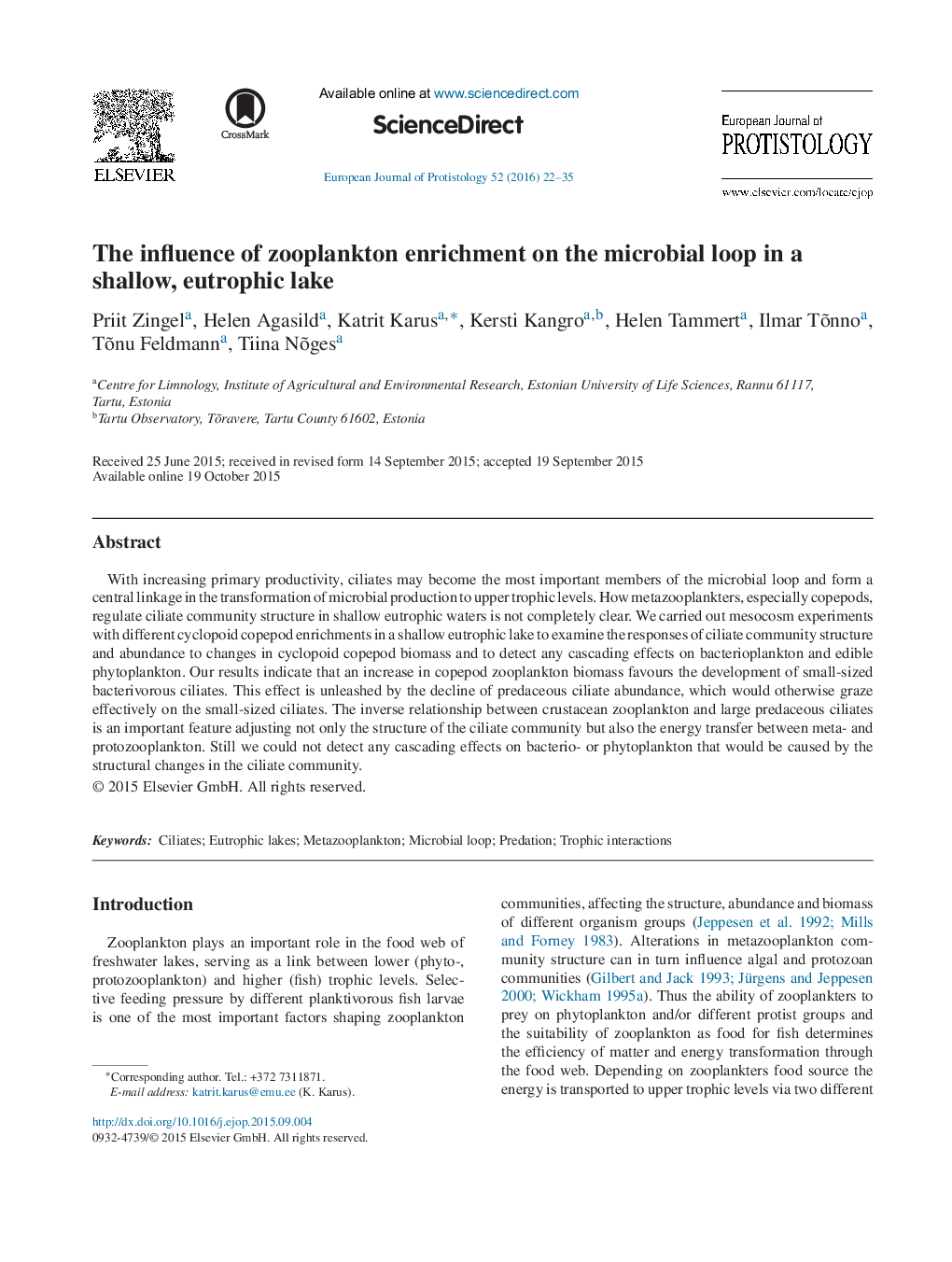| Article ID | Journal | Published Year | Pages | File Type |
|---|---|---|---|---|
| 2047191 | European Journal of Protistology | 2016 | 14 Pages |
With increasing primary productivity, ciliates may become the most important members of the microbial loop and form a central linkage in the transformation of microbial production to upper trophic levels. How metazooplankters, especially copepods, regulate ciliate community structure in shallow eutrophic waters is not completely clear. We carried out mesocosm experiments with different cyclopoid copepod enrichments in a shallow eutrophic lake to examine the responses of ciliate community structure and abundance to changes in cyclopoid copepod biomass and to detect any cascading effects on bacterioplankton and edible phytoplankton. Our results indicate that an increase in copepod zooplankton biomass favours the development of small-sized bacterivorous ciliates. This effect is unleashed by the decline of predaceous ciliate abundance, which would otherwise graze effectively on the small-sized ciliates. The inverse relationship between crustacean zooplankton and large predaceous ciliates is an important feature adjusting not only the structure of the ciliate community but also the energy transfer between meta- and protozooplankton. Still we could not detect any cascading effects on bacterio- or phytoplankton that would be caused by the structural changes in the ciliate community.
